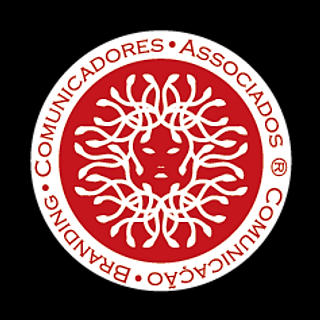"The Long and the Short of It" - Branding!
- Comunicadores Associados
- Jul 14, 2023
- 4 min read
"The long and the short of it" is an English idiom meaning "the essence of the matter" or "the main point".
In the context of brand communication strategies and branding development, "the long and the short of it" is what differentiates one brand from the others.
It's what makes it unique, memorable and valuable to consumers.

What does it contribute to?
There are many factors that can contribute to "the long and the short of it" of a brand, but some of the most important ones are:
The brand's mission and values: what does the brand believe in? What is she trying to achieve?
Brand personality: how does the brand communicate? How does it want to be perceived by consumers?
Brand positioning: where does the brand position itself in the market? What problems does it solve?
The visual identity of the brand: the logo, typography, colors, images and other visual elements that represent the brand.
The Brand Experience: How do consumers interact with the brand? What kind of experience do they have?
When all these factors are aligned, they create a strong, cohesive brand that is able to connect with consumers on an emotional level.
A brand that has "the long and the short of it" is more likely to be successful in the marketplace as it has a unique and memorable identity that sets it apart from other brands.

Here are some examples of brands that have "the long and the short of it":
Apple: Apple's mission is to "build innovative products that help people be more productive and creative." Apple's personality is elegant, minimalist and sophisticated. Apple positions itself as a brand of high-quality products that are easy to use. Apple's visual identity is simple and elegant, with the bitten apple logo being one of the most recognizable logos in the world. The Apple experience is luxurious and personalized, with consumers able to choose from a variety of products and services to suit their needs.
Nike: Nike's mission is to "inspire and empower every athlete in the world". Nike's personality is confident, positive and ambitious. Nike positions itself as a sports brand that helps people achieve their goals. Nike's visual identity is modern and dynamic, with the Swoosh logo being one of the most iconic logos in the world. The Nike experience is sporty and immersive, with consumers able to participate in a variety of sporting activities and connect with fellow athletes.
Coca-Cola: Coca-Cola's mission is to "satisfy the world's thirst and create moments of happiness". Coca-Cola's personality is friendly, fun and universal. Coca-Cola positions itself as a brand of refreshing drinks that are enjoyed by people of all ages. Coca-Cola's visual identity is classic and iconic, with the bottle logo being one of the most recognizable logos in the world. The Coca-Cola experience is refreshing and fun, with consumers able to enjoy a Coke anywhere and anytime.
These are just a few examples of brands that have "the long and the short of it".
If you're trying to create a strong, cohesive brand, make sure you take into account all the factors that contribute to "the long and the short of it".
With a little effort, it is possible to create a brand that is unique, memorable and valuable to consumers.
When all these factors are aligned, they create a strong, cohesive brand that is able to connect with consumers on an emotional level. A brand that has "the long and the short of it" is more likely to be successful in the marketplace as it has a unique and memorable identity that sets it apart from other brands.
The work based on "The long and the short of it"
Binet and Fields' "The Long and the Short of It" is a comprehensive study of marketing effectiveness.
The authors analyze a large amount of data from marketing campaigns and conclude that there are two main types of marketing communication:
Short-term communication: communication that aims to generate immediate sales.
Long-term communication: communication that aims to build the brand and generate sales in the long term.
Binet and Fields claim that long-term communication is more effective than short-term communication.
They base this claim on two main arguments:
Long-term communication generates more sales in the long run.
Long-term communication is more effective in building the brand.
Long-term communication generates more sales in the long run because it helps build consumer trust and loyalty.
When consumers have trust and loyalty to a brand, they are more likely to buy its products and services, even when there isn't a promotion or discount.

Long-term communication is also more effective in building the brand because it helps create an emotional connection with consumers. When consumers connect emotionally with a brand, they are more likely to remember it and speak highly of it to others.
The benefits outweigh the wait.
In conclusion, "the long and the short of it" is an important concept for brands that want to be successful in the market.
Brands that have a clear mission and values, a strong personality, a well-defined positioning, an attractive visual identity and a positive brand experience are more likely to connect with consumers on an emotional level and generate long-term sales.
The benefits and profitability of investments, even if they take longer to be reported (ROAS), they are more efficient and longer lasting.
And it seems to us that almost no brand comes up with the intention of being around only during sales or any "friday"!






Comments